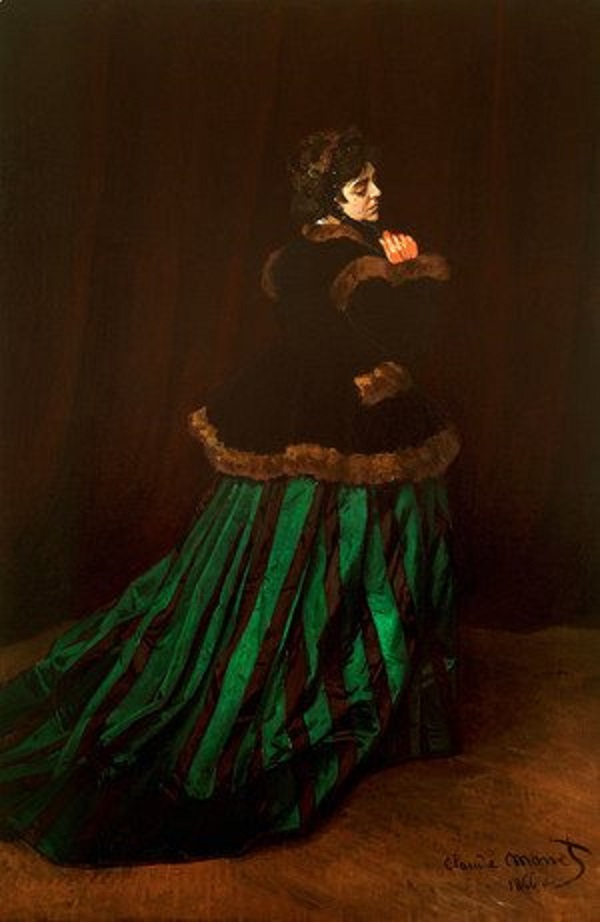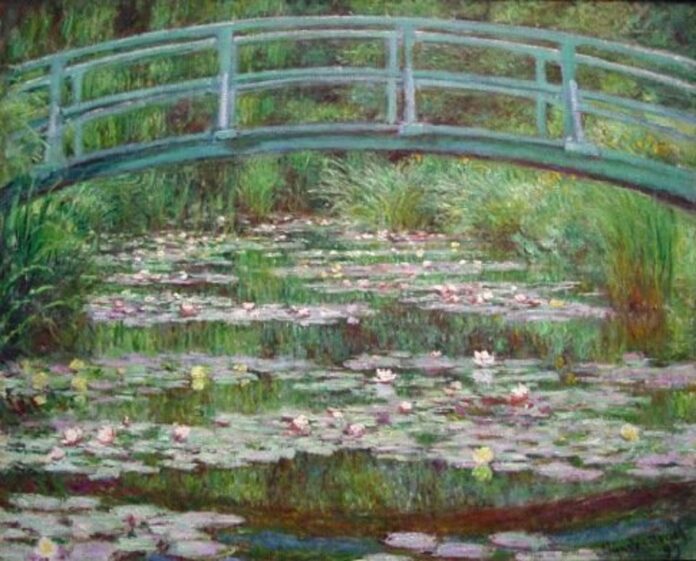Oscar Monet was a prolific French painter and the father of impressionist painting, an art movement named after Monet’s famous painting Impression, Soleil Levant (Sunrise). As an artist, Claude Monet favored the Impressionist Movement’s style of expressing art from nature’s perspective, particularly with open-air landscape painting.
His interest in the outdoors translated into his famous landscape art, which was particularly appreciated for capturing nature’s most peaceful sceneries and evasive nuances in various perceptions of light and color. In 1883 Monet acquired a property at Giverny where he went to work on a personal landscape project, a vast flower garden, and a pond.
Monet’s famous garden attracts a decent crowd of tourists each year. However, the water-lily pond that inspired his last series of paintings remains the main attraction. Between 1897 and his death in 1926, the artist created about 250 oil paintings depicting the water lilies in his pond in a series called Nymphéas (Water Lilies).
About Claude Monet
Young Monet was raised in the city of Le Havre, Normandy, a region in northern France, and from an early age, he’d develop an interest in drawing the world he saw while exploring the outdoors. His hobby soon developed into an ambition to pursue his passion for art.
The artist’s passion led him to study at the Académie Suisse, an art school in Paris that was very popular; the baker who founded it turned artist Martin François Suisse. There, he was tutored by academic history painter Charles Gleyre and was classmates with fellow French impressionist painter Pierre-Auguste Renoir, with whom he would later develop his art.
Earlier in his career, Monet garnered a reputation for himself as an artist who majored in charcoal sketches and caricatures. However, it wasn’t until he met Eugéne Boudin in 1857 that he began to create oil paintings. Boudin also introduced him to the concept of Plein air painting, an open-air style of landscape art; this ignited Monet’s passion for painting landscapes. Let’s go into more details and learn more about Monet artist.
Progressive Work
In 1865, Monet was accepted into the Paris Salon, an annual juried show for artists to showcase their art. Two of Claude Monet’s famous paintings were chosen for the show, but Monet artist received only a little recognition.
Monet was again selected to participate in the following year’s Salon. The show chose a landscape and a portrait. The portrait is the famous Camille, also called Woman in Green, which featured his mistress and future wife, Camille Doncieux. He continued submitting works to the Salon until 1870; however, the jury only accepted his works twice, in 1866 and 1868.

After that, in 1872, Monet banded with some other independent artists to form the Société Anonyme des Artistes, Peintres, Sculpteurs, Graveurs, which served as an alternative to the Salon and a platform for the artist to exhibit their works together.
The society’s April 1874 exhibition proved revolutionary for Monet. His most appreciated artwork in the show, Impression, Soleil Levant (Impression, Sunrise), is a hazy depiction of Le Havre’s harbor covered in the morning fog. The term “Impressionism” was coined from this painting by critics who mocked the Monet art style, saying it seemed more like unfinished sketches rather than completed work. The term has since become the accepted label for the painting technique.
Despite the criticism, Monet sought to embrace his new style by capturing the essence of nature using vivid colors and bold but short brushstrokes. After their first show, he continued to exhibit with the Impressionists until the 1880s.
Ice Drift Series
His wife Camille became seriously ill while carrying their second son and continued to deteriorate. Finally, in 1878, Camille was diagnosed with Uterine Cancer, and she died the following year. Her death, coupled with the financial hardships Monet experienced at the time, badly affected his art which took on a dark appearance.
The portrait Monet painted of his late wife on her deathbed became the first in a set of grim paintings known as the Ice Drift series. Art critic John Berger describes them as “a blizzard of white, gray, purplish paint … a terrible blizzard of loss…”.
Monet married Alice Hoschedé, a widow with six children, following his wife’s death. The two relocated to Poissy, where they raised their children together.
Water Lilies
In April 1883, Monet found himself looking out the window of the train he boarded, and he discovered Giverny, situated between the town of Vernon and Gasny in Normandy. The following month, he moved his large family into a house in Giverny. The property had a barn that also served as an art studio, orchards, and a garden with enough natural areas for Monet to paint.
Read Also: What Are Some Disadvantages of a Treemap Chart?
The move to Giverny proved beneficial to Monet’s career as he began creating more art and making significant profit from which he bought the adjoining plot of land to his estate. He worked with gardeners to build a pond by diverting the Ru river on which he planted exotic flowers like water lilies and other plants like weeping willows and bamboo trees.
In addition to its aesthetics, the pond inspired Monet to develop his famous Water Lilies project, a series of several dreamlike landscape paintings depicting the lilies in his pond in alternating light and varying weather conditions. The Japanese-style bridge over the pond became a regular feature in several of his works.
The Water Lilies served as the focal point of his artistry in the last thirty years of his life. Before his death, the state of France built two rooms at the Musée de l’Orangerie as a permanent residence for eight of his water lily murals. While many of Claude Monet paintings have been auctioned, several others are on prominent display at museums and art galleries around the globe.
The Bottom Line
Monet’s Giverny transition was more than a mere change of address. It also represents his transition from grief to finding a new purpose, and his Water Lilies series embody this shift in all their mesmerizing glory.










